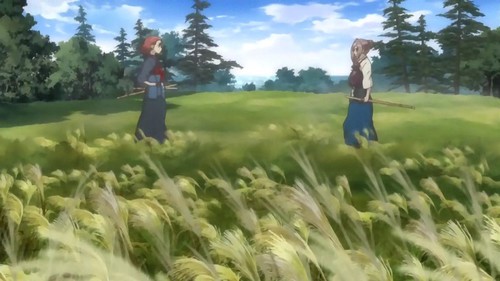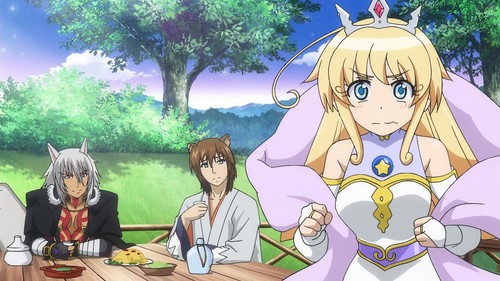Interest
Foreign Animators in Japan Weigh in on Industry Conditions Part 2: Scott MacDonald
posted on by Lynzee Loveridge
In the last few months, discussion has turned to working conditions in Japan's animation industry. Veteran animator Sachiko Kamimura commented that animators sometimes earn as little as 120 yen an hour. An American animator working in Japan shared his own experiences, calling the conditions an ‘illegally harsh’ industry.
The Japanese government's Agency for Cultural Affairs, along with the Japan Animation Creators Association (JAniCA), conducted a new study of the working conditions, average income, and working hours of new animators in the Japanese animation industry. The study found that young animators work an average of 11 hours every day, and in-between (dōga) animators — many of whom are in their 20s — earn a yearly income of around 1.1 million yen (around US$9,200).
Others have stated that these experiences are anecdotal, and that the instability and wages do improve with time. In the mean time, a program to provide housing for low-income animators is attempting to ease some of the difficulties.
Anime News Network reached out to other foreign animators living in Japan to discuss their experiences, wages, and how they made ends meet while living separate from their families and possibly speaking little to no Japanese. We spoke with French animator Cedric Herole, background artist and background art director Scott MacDonald, and art designer Yann le Gall for a series of three interviews.
Scott MacDonald

Q: When did you first start working in the anime industry in Japan?
MacDonald: I first started my trip into the anime industry back in 2006, when I enrolled in an animation course at a technical college here in Shinjuku, Tokyo. Here, we studied everything from drawing layouts, backgrounds, to drawing storyboards, and even video editing. Eventually I found my field in background art and concentrated mainly on that for my second year.
Before graduating I had a chance to visit the famous background art company Kobayashi Productions, where upon looking at my portfolio, Mr. Shichiro Kobayashi asked me to do an internship there, which I started the next week. However, it was extremely hard going, as it was all hand-painted without use of PhotoShop, so it was quite stressful. I wanted to continue but at the time, I didn't have the confidence. After a couple of weeks, I apologized to Mr. Kobayashi and left. It was a great experience though.
After that, I concentrated on my graduation project, and went to various interviews for background artist jobs. Until finally I landed where I am now.
Q: What was your first animation project?
MacDonald: The very first anime I worked on was a TV series called Bamboo Blade. A late evening anime based around girls' high school kendo team. I wasn't very skilled at all at the time, so I only worked on a few pictures for every episode.
My first true anime series where I became a permanent team member (we usually split staff into groups to concentrate on a certain series) was the TV series Asura Cryin'. Every week I had between 30-40 pictures to draw for each episode, along with other work such as OVAs, game backgrounds, etc. Gradually as time progressed, and as my skills increased, I received more and more work, where my picture amount became around 50-80 a week.
Q: What was it like working on that project? What were the time constraints at the time?
MacDonald: My working hours varied each day depending on my work load and the anime deadlines. Usually, I start work around midday, and finish around 8 p.m. when I'm not busy, but I can be working right up until the last train sometimes also. It all depends.
Q:Where were you living in Japan and how did you afford your living expenses?
MacDonald: When I first joined the company, I was living in Yokohama, but the studio is based in West Tokyo, which resulted in a 90 minute commute on the trains everyday. It sounds long, but I got used to it very easily.
For the first year, I had a set monthly salary of 160,000 yen [US$1,335] before tax, and my transport fees were paid for by the company. I wasn't rich, but neither did I starve. I could still go out on the weekends with my friends also. I enjoy cooking so I would quite often buy food at the supermarket that was reduced, and make my lunch for the next day with that.
I have to admit there were sometimes where the final week before pay day were a little difficult, but I didn't let it get me down. After the first year, I moved onto piece-rate, where I needed to draw as much as I could to get a good salary. Now though, staff have the option to stay on a set salary for up to three years before having to move onto piece rate. These staff also have two days a week off. Unfortunately, we just have our Sundays off. [laughs] The salary has now changed for new staff starting to 200,000 yen [US$1,669] before tax. This used to be for the first year only, however, should the staff request it, they can stay on the set system for up to three years.
For those who are faster and more skilled, moving on to the piece-rate system is more rewarding, yet there is no guarantee that they will earn over 200,000 yen [US$1,669] per month. It is dependent on their skills. On average, a regular background artist can expect to earn 250,000 [US$2,086] a month on the piece-rate system. Of course, some go much higher than this. It's completely dependent on the persons skills and motivation.
Background art is usually priced variably depending on the time needed for each background. Basic pictures can be around 1,300 yen [US$11] per picture, but can go further up to 8,000 yen [US$67] for more detailed difficult backgrounds, and even higher for game backgrounds. Also movies, games, and pachinko work is usually priced higher than anime pictures.
Q: Was there a reason you chose to live so far from your work?
MacDonald: The reason why I lived there was simply because I taught at a children's English school there in the afternoons and early evenings while I was attending Japanese language school. I enjoyed living there. It was a 55,000 yen [about US$450] per month apartment, so was very reasonable.
Moving house can be extremely expensive, though, as you need to pay up to five or six months rent in advance (first month's rent, second month's rent deposit, one or two month's rent "Thank You" money, one month rental estate agent fee plus insurance) so I decided to stay there for the time being. But, once I became director, I felt it was time to move to somewhere more convenient and a little bit more upmarket. Also after the massive earthquake, I wanted to feel a bit more secure, so I moved to my new apartment. It is also slightly more expensive at a little under 100,000 yen [US$834] per month. However, a lot of staff tend to live fairly local to the studio, here in West Tokyo. It's a fairly reasonable area to live in, but it's a little too countryside for my liking, so I decided to stay central Tokyo in Shinjuku.

MacDonald: There was a few times, up until a few years ago, that in order to meet deadlines, some of us would work overnight. Some people even had blankets under their desks in case they needed to. I also had mine. But due to movements within the industry, mainly due to a famous company being taken to court over its treatment of staff, our situation has improved in many ways. We no longer work overnight, for one. Plus, our company tends to outsource work to other studios both nationally and internationally to take the stress off the staff inside the company. Of course its still hard work, but we have a little less stress due to impossible deadlines now.
Also, when I first joined the company, I had to take care of my health insurance and residential tax by myself, often resulting in missed payments, but now the company deals with this for us also. We also get a bonus twice a year, like many other Japanese companies. Of course its not as high as other bonuses but its a nice extra!
Q: Do you do any other jobs at the same time as animating to help with expenses?
MacDonald: Now, as an Background Art Director, compared to my first year's salary, I now make anything from three to four times that amount. I managed to move to really nice and convenient condominium apartment which is a 10 minute walk to Shinjuku station. I didn't need to work any other job while I've been working here. However to finance my two years of Japanese language school and two years at a technical college, I did teach English in the evenings. I was very thankful to both schools, who had monthly payment schemes, so I could pay for my course as I went along, rather than having to pay a lump sum upfront.
Q: What keeps you within the industry?
MacDonald: I think it's the satisfaction I get when I see the end results on the TV or the big screen, and then receiving feedback from the people who watch them. I enjoy watching the shows I work on, and reading comments on Twitter, or net blogs and feedback boards after each episode. Then, there are the events that I go to where I get to see the fans, and every time I am amazed at how enthusiastic they are. It's really quite amazing to see. Everyday I come to work, and I never know what I am going to be asked to draw next, or what show I'm gonna be working on. Today I'm drawing the inside of a whale, tomorrow I will be drawing a castle, next week I could be drawing the center of Shibuya....everyday is different, and that's the fun of it. Of course there are thing that I hate to draw, but it's a career and a job, and I have to complete each task and challenge to the best I can.
follow-up of Foreign Animators in Japan Weigh in on Industry Conditions Part 1: Cedric Herole